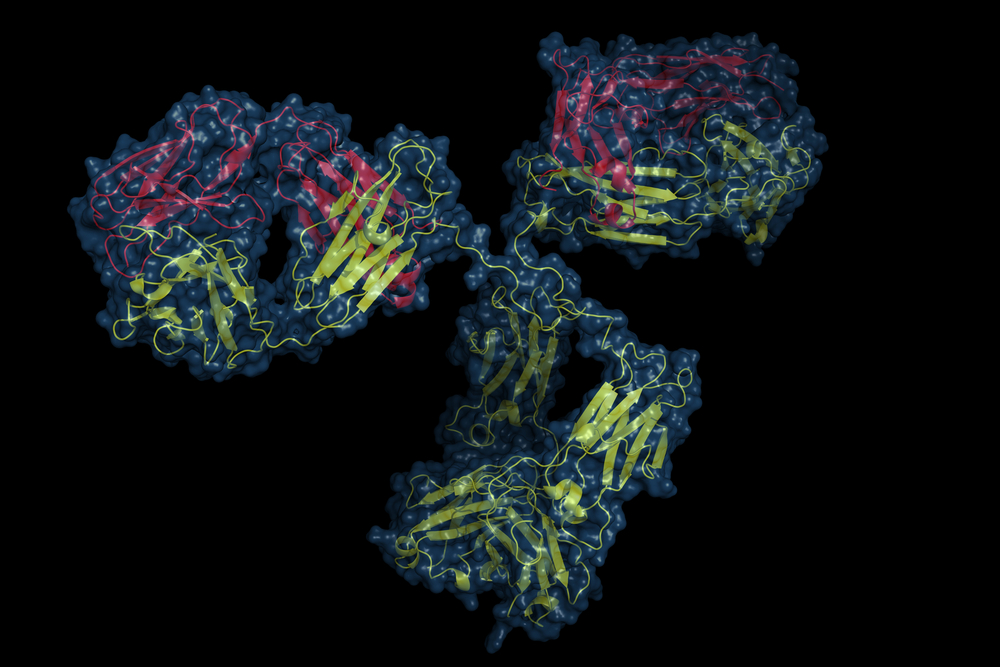MOUSE ANTI-CANINE DISTEMPER VIRUS SURFACE ENVELOPE ANTIBODY (8-1)
Mouse anti canine distemper virus surface envelope antibody (8-1) is a monoclonal antibody that is specific for canine distemper virus (canine morbillivirus) surface envelope antigen. MAB12408 can be used as a capture antibody with MAB12407 as a detection antibody. See our Matched Pair Antibodies for more information. Our mAbs have been tested in ELISA, and they can be used to detect native CDV from clinical samples such as blood, saliva, tears and feces.
PRODUCT DETAILS – MOUSE ANTI-CANINE DISTEMPER VIRUS SURFACE ENVELOPE ANTIBODY (8-1)
- Mouse anti canine distemper virus surface envelope antibody (8-1).
- Isotype – Mouse IgG2a.
- Specific for surface envelope antigen of canine distemper virus.
- Purified by chromatography on protein A Sepharose.
- Suitable for ELISA, LFA and plaque linked assay.
BACKGROUND
Canine distemper is a highly contagious, multisystemic viral disease that affects the respiratory, gastrointestinal and central nervous systems. The disease is caused by the canine distemper virus (CDV) and is found in puppies and dogs that have not been vaccinated. Infected dogs shed the virus through bodily secretions and excretions, especially respiratory secretions. The primary mode of transmission is airborne viral particles that dogs breathe in. Distemper is highly immunosuppressive, and secondary bacterial pneumonia can develop in dogs with a primary viral infection. Consequently, distemper has a very high mortality rate.
Canine distemper virus (CDV) is a large (100–250 nm) single-stranded RNA virus belonging to the genus Morbillivirus of the family Paramyxoviridae. It has a lipoprotein envelope, containing a ~15.6kbp negative-stranded RNA genome containing six genes that code for a single envelope-associated protein [matrix (M)], two glycoproteins [the haemagglutinin (H) and fusion (F) proteins], two transcriptase-associated proteins [phospho-protein (P) and large protein (L)] and the nucleocapsid (N) protein, which encapsulates the viral RNA (Loots et al., 2017). Two cellular receptors have been described regarding the CDV host’s cell recognition and virus entry, which include the SLAM (Signaling Lymphocyte Activation Molecule or CD150) in the peripheral blood mononuclear cells and nectin-4 (PVRL4) in the epithelial cells.
There is a canine distemper vaccine available and it is one of the most rapidly protective vaccines available in veterinary medicine, providing protection against severe disease and death within days. However, it does not provide immediate protection against infection and shedding. CDV is also common in wildlife and it has a broad host range including numerous species from the order Carnivora, marine mammals, and non-human primates (Martinez-Gutierrez & Ruiz-Saenz, 2016).
REFERENCES
- Loots et al. (2017). Advances in canine distemper virus pathogenesis research: a wildlife perspective Journal of General Virology, 98:311–321.
- Martinez-Gutierrez, M., & Ruiz-Saenz, J. (2016). Diversity of susceptible hosts in canine distemper virus infection: a systematic review and data synthesis. BMC veterinary research, 12, 78.

